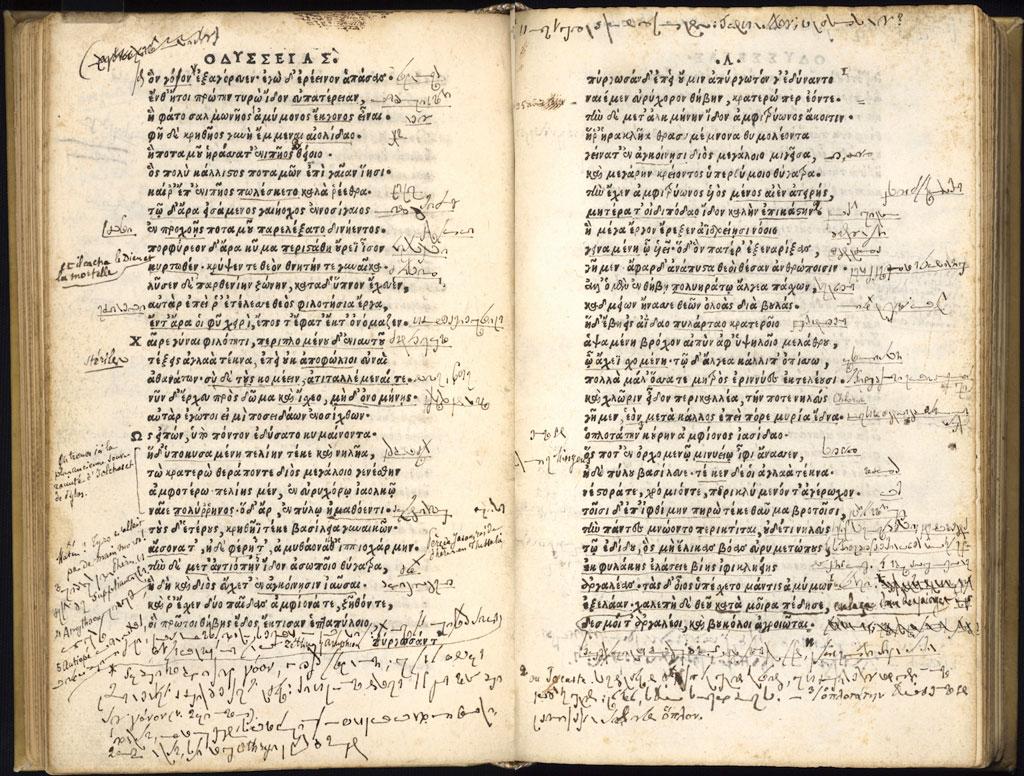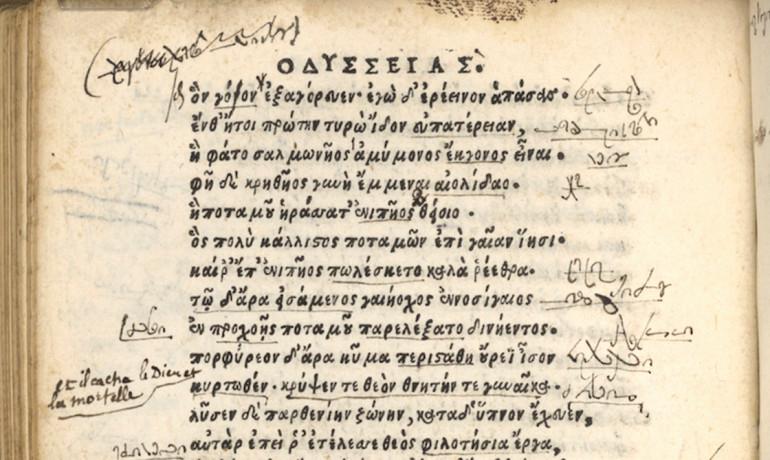When a 16-century Venetian edition of Homer’s Odyssey surfaced in 2007, the text included handwritten notes in the margins in an unknown script. The annotations were thought to date back to the mid-19th century, but nothing else was known about them.
To decipher the notes, the University of Chicago Library—which received the text as a donation—launched a contest. They offered a cash prize to the first person to identify the script, provide evidence to support the conclusion, and execute a translation of selected portions of the marginalia. The contest generated submissions from around the world.
The first person to decode the notes was an Italian computer engineer named Daniele Metilli, who worked with Giula Accetta, a colleague who is proficient in contemporary Italian stenography and fluent in French.
According to Metilli, social media and electronic resources made it possible for him to identify the shorthand and translate the first fragments within just a few hours.
“If I didn’t have access to online sources such as Google Books, the Greek Word Study Tool of the Perseus Digital Library, and the French corpora of the CNRTL, I probably wouldn’t have won. What great times we live in!”

View larger. (Courtesy of University of Chicago Special Collections Research Center)
French Shorthand
Metilli identified the mystery script correctly as a system of shorthand invented by Jean Coulon de Thévénot in the late 18th century. The annotations themselves are mostly French translations of words and phrases from the Greek text of the Odyssey.
Based on the mix of French words with the script and a legible date of April 25, 1854, Metilli and Accetta began with the assumption that it was a system of French stenography in use in the mid-19th century.
After rejecting several 19th-century French stenographic systems, they found a chart comparing one of them to the “tachygraphie” (shorthand) system invented by Thévenot and published in “Méthode tachygraphique, ou l’art d’écrire aussi vite que la parole” (1789). They found an 1819 edition revised by a professor of stenography, N. Patey, online. Armed with two contemporary French translations of the Odyssey, one published in 1842, the other in 1854-66, they began the work of translating the annotations.
In Thévenot’s system, “every consonant and vowel has a starting shape, and they combine together to form new shapes representing syllables,” Metilli wrote. “The vertical alignment is especially important, as the position of a letter above or below the line, or even the length of a letter segment can change the value of the grapheme. This explains why most notes in the Odyssey shorthand are underlined—the line being key to the transcription.”
Metilli and Accetta are continuing to work on the annotations, and hope to discover the identity of their author and an explanation for why they only exist in one section of the text.
Source: University of Chicago. Republished from Futurity.org under Creative Commons License 3.0.



